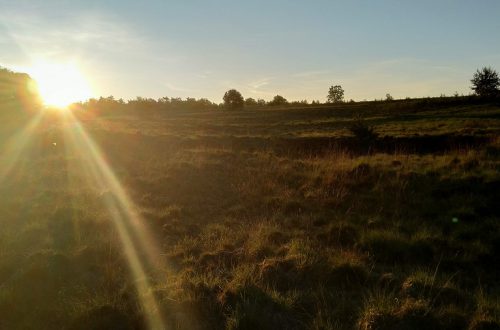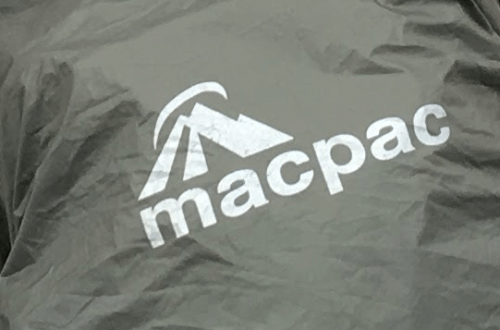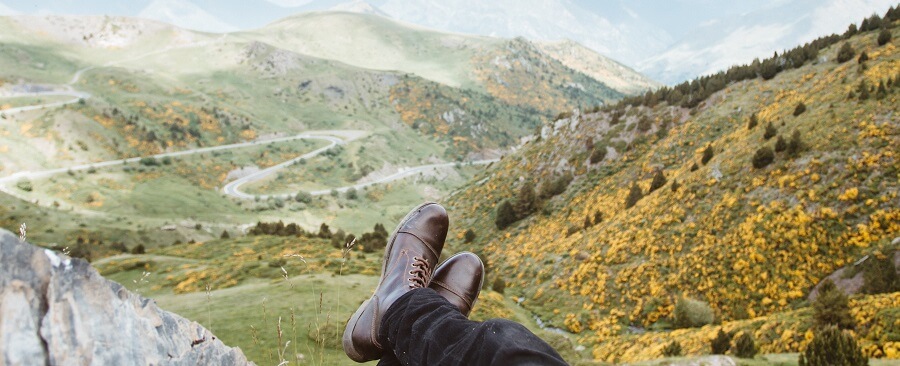
The History of Hiking boots
Hiking and walking is a big part of Human history, the footwear and boots that we wore on our feet have changed considerably over the centuries. In this article I cover our history of Hiking and walking footwear in an overview.
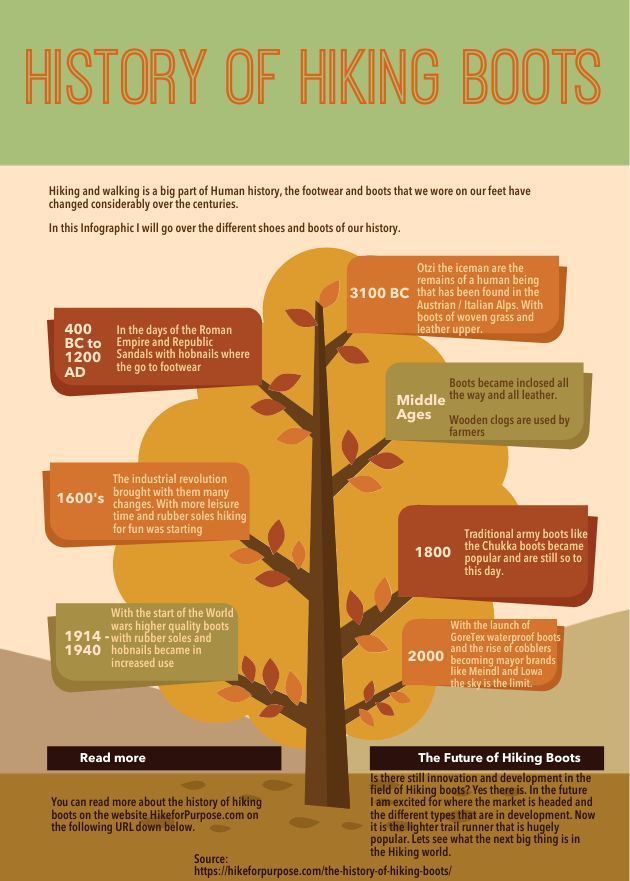
Earliest known footwear
Otzi the iceman are the remains of a human being that has been found in the Austrian / Italian Alps. Dating back to 5300 years ago he has been an invaluable resource and a look in to the life as it was back then.
What is special about his find is that all his gear is with him and preserved in the ice. From his flint dagger to the clothes he was wearing when he died. His footwear is the focus in this article.
The study of ancient footwear and hiking boots throughout the ages is known as Calceology and is a fascinating branch of archaeology to me. The shoes on Otzi the Iceman feet where made of several different natural materials and fibers and provided grip on the icy surface, warmth and protection against sharp rock.
The shoes have been recreated and tested by several different hikers in rough terrain and are as useful as they where 5300 years ago.
Otzi the Iceman’s shoes where made out of woven grass and leather strips and where filled with hay for insulation. The outer shoe was made out of thick deer hide and lashed onto the sole. To see the original shoe and the full story about his clothing I suggest you take a look at the South Tyrol Museum of Archaeology website.
Hiking and walking throughout the ancient armies
Armies march on their stomachs, but what they have on their feet is important. Ancient Greek, Roman and eastern armies would have been wearing a mixture of Sandals as their main footwear. Given the climate these where a good option to keep the feet dry and offer some protection.
Roman Caligae or the army sandals where fitted with hobnails in the sole to offer more grip on soil and loose surfaces. I suggest checking out the popular youtuber LindyBeige video about ancient footwear and its use during battle reenactment.
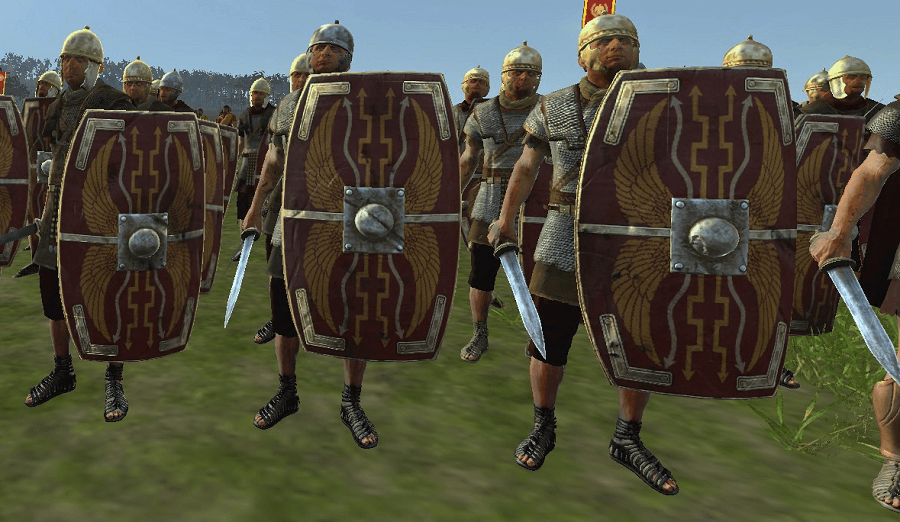
Roman troops stationed in the Roman Empire on the northern borders where outfitted or bought boots to offer more protection from the colder climate. It is thought that having a more enclosed boot originated from farmers and made its way into the army to gradually replace the Caligae. The boots would still have hobnails in the sole for better grip but would have been fully enclosed and made from leather.
On vases and murals we see that ancient hoplites and legionaries would have worn Sandals that would have been wrapped to just under the knee.
Middle age hiking footwear
In the Middle ages footwear began to become more available and affordable for a lot more people. Boots fashioned from leather where the main stay and soles made from wood or multiple layers of leather where the standard.
Wooden clogs where also popular with farmers and workers. In the Netherlands you can still see professions in the country side that use wooden clogs or klompen to work in. Hiking long distances however in wooden clogs is not the most comfortable thing in the world.
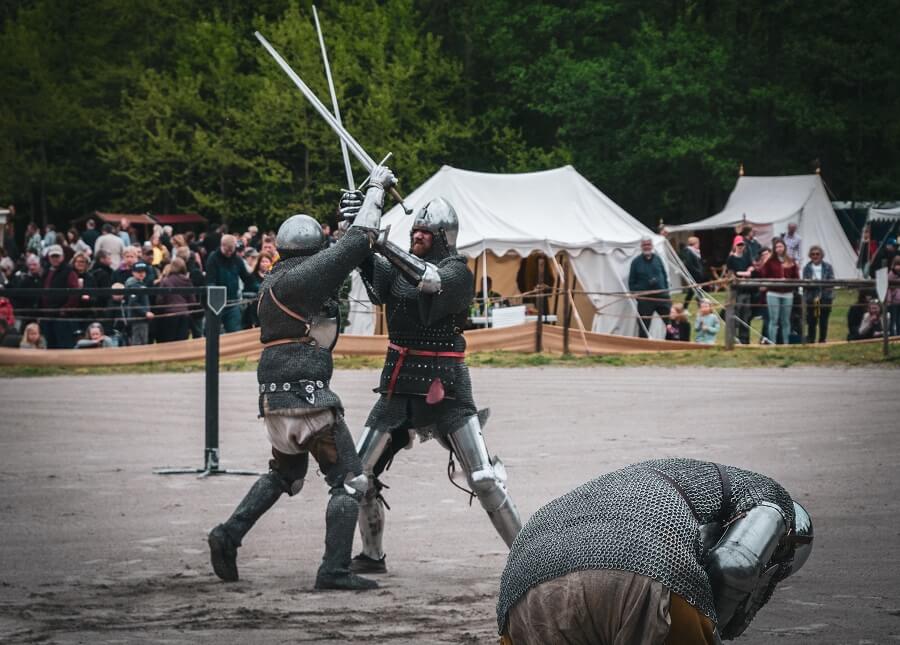
Leather boots where sewn inside out and turned around for the final product so that any seams where on the inside of the boots. Socks would have been made from wool or boots where stuffed with dry grass to soak up any moisture that may develop. The feet would have still been extremely tough by today’s standard with a thick layer of callous to protect it.
On the Camino to Santiago I heard a story about a Pelgrim that walked it barefoot and could cut of callous off his feet with a knife and feed it to his dog. Not a very pleasant thought.
Travelers, Merchants and Soldiers would have been the people that hiked the most in these times. Horses where expensive and only for the more noble classes. Boots and footwear would be comparable between these three types of professions.
Recent history boots
In the period after the industrial revolution and the World wars people got more free time on their hands to pursue more leisure. This translated in the popping up of hiking just for fun and the demand for hiking shoes by cobblers. The soles where made from rubber for the first times and with a leather upper.
These first mountain hiking boots would have been extremely tough by today’s standards and not with the same amount of comfort as we know today. Rubber was a revolution in the shoes and boots history that made boots more durable and grippier on wet and rough terrain.
At the same time you see Armies using the boots that are now still in use or modeled after. The popular Chukka boots started as a British Military boot for use in Africa for example.

The start of hiking for sport
In the mountains of Germany, France and Austria the first mountain climber expeditions started at the turn of the 19th century. Challenged by the tops of the peaks they needed boots that could withstand more than the boots with cardboard soles. Cobblers set to the task and businesses like Meindl started in Bavaria to supply these shoes.
World War footwear
In both the First World War and the Second World War soldiers wore a variety of boots. In the First World War you hear of Italian soldiers being send to the winter front in the Alps with cardboard soled boots that where useless. The same goes for other armies that fielded in the rougher parts of Europe.
Hobnails where still in use by the German army in World War 1 and 2. Quite special to think about that an invention that originated by the Romans was still in use in quite recent history.
If you are interested in this subject you can lookup your nearest reenactment clubs, these guys take it very seriously and you can learn a lot from them.
Current Hiking footwear and the future
Hiking boots are now an advanced field with many different manufactures and styles. From the more sturdy boots to light trail runners that are popular with Thru Hikers.
My boots the Meindl Sahara type are an adaptation from a combat boot for desert climates. These shoes are light and my perfect fit for longer distance hiking and multiple different terrains.
Trail runners that offer plenty of cushion are getting more and more popular. As also the barefoot options that have no heel in them.
Is there still innovation and development in the field of Hiking boots? Yes there is. In the future I am excited for where the market is headed and the different types that are in development. In the 1980’s is was the material Gore-Tex that sprung up and quickly got used in a bunch of different shoes. Now it is the lighter trail runner that is hugely popular. Lets see what the next big thing is in the Hiking world.
If you have any further suggestions for this article be sure to let me know. Happy Hiking and Hike for Purpose!




